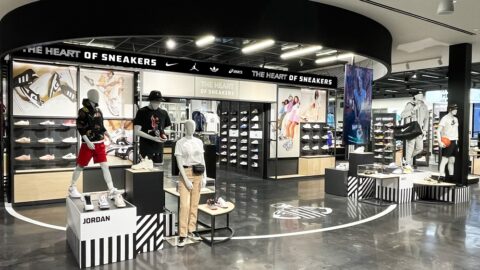The global RFID market will generate $70.5 billion from 2012 to 2017, according to recent predictions from ABI Research. RFID implementations increased by $900 million in 2011 and are expected to grow 20% annually, year-over-year, according to the report. Retail was identified as one of the four the most valuable market sectors for RFID implementations, which together will account for 60% of accumulated revenue over the next five years. “Retail in particular is set to experience very strong growth,” stated John Devlin, ABI Group Director. “In fact, it will become the single largest RFID sector in 2015.” ABI reported that efficiency and improved operational capability are the overriding goals behind retail adoption.
RFID implementations are starting to emerge globally. In Russia, RFID has been implemented for the first time by a footwear retailer. CentrObuv, Russia’s leading footwear retailer, has announced its partnership with Avery Dennison Retail Branding and Information Solutions (RBIS) to use RFID to improve inventory visibility and significantly reduce retail out-of-stocks and stranded inventory, enhancing the shopping experience and the retailer’s ROI. The pilot turn-key solution prints and encodes RFID labels and tickets in CentrObuv’s several distribution centers to track the movement of stock both in and out of the store; more efficiently conduct stock counts and manage replenishment; and support loss prevention.
Of CentrObuv’s 800 stores, 265 new stores were introduced in 2011, with another 371 slated to open during 2012. In addition, “our growth rate during the last five years has been at least 35%, with gross sales of over $1 billion in 2011. To sustain this tempo of development, we need to pay extra attention to standardization, and increase the efficiency of production, logistics and, of course, our retail stores,” Marcin Tokarz, Commercial Director at CentrObuv, told Retail TouchPoints. RFID technology helps us look at all these processes from a new perspective, with the key objective of improving efficiency in inventory management, optimizing time and personnel resources, and enhancing the quality of stock counts.”
Advertisement
Currently, CentrObuv’s existing technologies cannot manage the company’s business needs, given the retailer’s aggressive growth, noted Andrey Nesterov, CEO of CentrObuv. “RFID helps us capture the information we need regarding the availability of any item in any store, wherever its location. It gives us a better view of our entire assortment, which is over 2,500 SKUs, allowing us to improve the way we serve our customers’ needs.”
Many industry experts are predicting a wide-scale RFID adoption within the next three to five years, said Francisco Melo, VP of Global Inventory Accuracy and Loss Prevention, Information Solutions Market Development, for Avery Dennison RBIS. “An increasing number of our customers are rolling out, piloting or seriously considering RFID,” said Melo. “This movement is supported by Apparel Magazine’s ‘6th Annual Top Technology Trends in the Apparel Market’ report [released January 2012], which stated that 58% of respondents planned to increase RFID budgets in 2012, with another 56% to 80% planning to deploy RFID technology within the next 18 months.”
A retailer’s inventory typically is only 65% to 70% accurate at the size/style/color SKU level, Melo reported. “However, using a modern handheld RFID reader can yield 99% or more inventory accuracy,” he said. “This visibility allows retailers to replenish out-of-stock items and draw down excess inventory. In addition, by integrating RFID into the garment at source, retailers can achieve heightened product visibility, improving accuracy in the supply chain. For example, as cartons arrive at the distribution centers, RFID gives visibility into 100% of incoming shipments, versus the 10% inspection typical at many of those centers today. Using RFID also can ensure that all outgoing shipments are accurate, without the increased cost of manual validation.”
As the market develops through 2013, Melo sees RFID’s benefits extending beyond the store level “to touch the entire supply chain by reducing vendor fraud, administrative errors and employee theft.”








